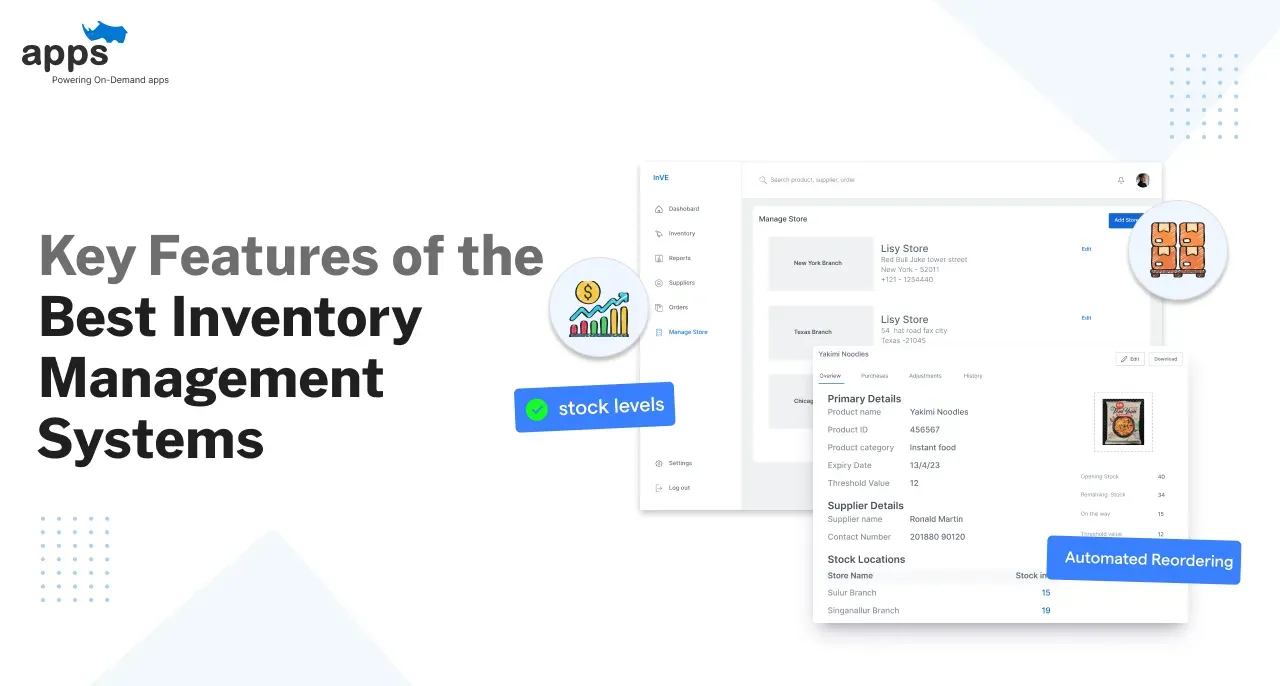- Introduction
- How to Develop a Fail-Proof Hungry House App Clone: Step-by-Step Guide
- Common Mistakes to Avoid when Developing a Hungry House App Clone
- Conclusion
- Frequently Asked Questions [FAQs]
Table of Contents
Must-Avoid Mistakes for a Fail proof Hungry House App Clone

Introduction
The market for food delivery apps continues to grow at a rapid pace. With an increasing number of people relying on the convenience of ordering food right at their doorstep, there is a sea of opportunities for entrepreneurs to succeed with a well-crafted app clone.
Despite being relatively new, the Hungry House currently stands as one of the most famous platforms when it comes to food delivery. It incorporates an intuitive platform from which users can readily place orders while surfing through the ocean of restaurants it has to offer, all of it with just a few taps.
A Hungry House app clone is an application that reciprocates the features and functionalities of an already- established app in the market. This works in favor of entrepreneurs who wish to lay down their own food delivery platform, as they can utilize the core features and functionalities and replicate them in their own app and add further elements in order to stand out from the crowd.
The primary way through which you can avoid making mistakes is by learning from the mistakes made by others. By understanding the challenges faced by existing players in the market and delivering a flawlessly executed app, you can stand out in the crowd and win over hungry customers.
How to Develop a Fail-Proof Hungry House App Clone: Step-by-Step Guide
In order to deliver a successful app, certain steps must be taken into consideration, which are discussed below:
Step 1: Choosing the right technology stack and development approach
A perfect app is the product of an accurate blend of technologies and development methodologies. This will help create a robust and scalable platform that can handle the demands of a growing user base.
Step 2: Designing a user-friendly and intuitive interface
One of the major reasons why certain delivery apps are on demand, and rest are not, is the presence of a user-friendly platform. Therefore, it is generally advised to opt for an intuitive and visually appealing design that seamlessly guides users through the ordering process and makes their journey smooth as butter.
Step 3: Implementing robust features for smooth app functionality
In order to make sure that the users have a seamless experience while they are surfing through the app, you can incorporate features like real-time order tracking, personalized recommendations, easy menu navigation, and smooth payment processing.
Step 4: Integrating secure payment gateways and data protection measures
Integrating secure payment gateways helps foster a relationship of trust and security with your users; it also ensures that the app has robust data protection measures in place. Users can confidently make hassle-free payments without any worries.
Step 5: Testing the app thoroughly for bugs and performance issues
The app must go through multiple testing before it's introduced to the public. Thorough testing ensures that there aren’t any apparent bugs in the system and guarantees a seamless experience for users.
Step 6: Launching and marketing the Hungry House app clone
The final step is to unleash your Hungry House app clone to the world! Create a buzzing launch campaign, leverage social media platforms, partner with local restaurants, and offer tempting promotions to attract users and make your app a go-to destination for food lovers
Suggested Reading:
Common Mistakes to Avoid when Developing a Hungry House App Clone
Before heading into business, it is important to acknowledge the common mistakes that should be avoided when developing a Hungry House app clone. By steering clear of these pitfalls, you can ensure a smooth journey towards app’s success.
Ignoring market research and not understanding user needs
A complete market research before working on your app can prove to be extremely beneficial in the long run. Proper market research leads to an accurate understanding of the needs of your potential users. By delving into the demographics, preferences, and pain points of your target audience, you can tailor your app to their desires and serve up an experience they'll love.
Neglecting scalability and performance optimization
In the fast-paced world of food delivery, it's essential to build an app that can handle the crowd. Neglecting scalability and performance optimization can result in a sluggish app that leaves users frustrated and hungry. Ensure your app can handle a large influx of orders without compromising on speed or functionality.
Overcomplicating the app with unnecessary features
Make sure that your app is not overflowed with features. Adding numerous features does not mean your app is better than the rest of the lot because this would just lead to the users getting confused and having difficulty managing the app. The key is to keep it simple, focus on the core functionalities, and add features strategically to enhance the user experience rather than clutter it.
Failing to deliver a seamless user experience
A delightful dining experience is about more than just the taste of the food - it's the ambiance, the service, and the overall experience. In the world of app development, this translates to a seamless user experience. Ensure that your app is intuitive, responsive, and easy to navigate. From the moment a user opens the app to the final bite of their meal, every interaction should be a joyous one.
Underestimating the importance of a robust backend infrastructure
The secret behind every successful app lies in a robust backend infrastructure. Underestimating the importance of a solid backend can result in a soured experience for both users and restaurateurs. Invest in a reliable and scalable backend system that can handle the demands of a growing user base and ensure smooth order processing and management.
Conclusion
In conclusion, developing a Hungry House app clone by avoiding common mistakes and incorporating best practices can lead you to the ultimate steps of success. All you need to do is make sure that key features of the Hungry House app are included in your application as well. These features can range from including an innovative user interface to providing live tracking features and numerous listings of restaurants. The resulting app is undoubtedly going to not only satisfy the cravings of users but bring them back over and over again because of the exclusive features that you have for them.
Another factor that needs to be put under consideration by every aspiring entrepreneur is the importance of market research, scalability, and user experience. Serve up a user-centric design, efficient order management, and exceptional customer support. These insights into the market can help businesses in the long run, such as gearing up for probable mistakes they can encounter whilst working with the app to lay down an application that is loved and trusted by one and all. Above all, have fun in the kitchen of app development, where the possibilities are as endless as the flavors in a diverse menu.
Frequently Asked Questions [FAQs]
How important is it to avoid mistakes when developing a Hungry House app clone?
Developing a Hungry House app clone can be a significant undertaking, and avoiding mistakes is crucial for ensuring its success. By sidestepping common pitfalls, you can save time, resources, and maintain a fail-proof clone.
What are some common mistakes to avoid when developing a Hungry House app clone?
There are several mistakes that should be avoided when developing a Hungry House app clone. These include inadequate market research, overlooking user experience, neglecting to optimize for mobile devices, underestimating the importance of robust security measures, inadequate scalability planning, and failing to provide timely customer support.
How can inadequate market research impact the success of a Hungry House app clone?
Insufficient market research can lead to a Hungry House app clone that does not meet the user's needs or preferences. This can result in low user adoption, poor customer satisfaction, and ultimately, the failure of the clone.
Why is user experience (UX) important in a Hungry House app clone?
User experience plays a crucial role in the success of any app, including a Hungry House app clone. A poor UX can lead to frustration among users, increased bounce rates, and negative reviews. Prioritizing a seamless and intuitive user experience will enhance engagement and increase the chances of success.
How can optimizing for mobile devices impact the success of a Hungry House app clone?
In today's mobile-centric world, optimizing a Hungry House app clone for mobile devices is essential. Failure to do so can result in a poor user experience on smartphones and tablets, alienating a significant portion of potential users and limiting the app's success.
Table of Contents
- Introduction
- How to Develop a Fail-Proof Hungry House App Clone: Step-by-Step Guide
- Common Mistakes to Avoid when Developing a Hungry House App Clone
- Conclusion
- Frequently Asked Questions [FAQs]





